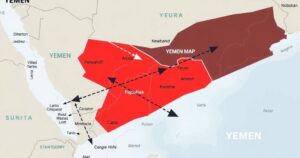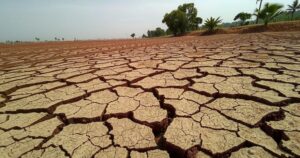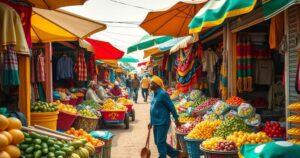Scars of War: Goma’s Ongoing Struggle in Eastern DRC

Goma is currently experiencing a troubling calm after the M23 rebel group seized control in January. Over 8,500 deaths occurred due to heavy fighting, while more than 1.2 million individuals have been displaced in the region. The humanitarian crisis is worsening, with lawlessness on the rise. Ndosho Hospital is overwhelmed, and ongoing conflict in surrounding areas like Sake persists.
GOMA, DR Congo, May 14 — A region that was once vibrant and bustling, Goma is now suspended in a haunting stillness beneath the looming presence of Mount Nyiragongo. Following the seizure of control by the March 23 Movement (M23) rebel group more than three months ago, the city’s daily life has been thrown into upheaval. Residents grapple with escalating violence and a sense of insecurity in the region.
The M23 rebels took over Goma on January 27, drawing comparisons with a similar event in 2012 that left a lasting scar on the city’s population of over two million. The aftermath of the takeover was formidable: intense fighting transformed Goma into a battleground, leaving massive casualties in its wake. Estimates from the DRC government indicate that upwards of 8,500 individuals lost their lives, while nearly 5,600 others suffered injuries. Furthermore, reports from the ground highlight the harrowing impact on displacement camps, with many vulnerable individuals, including pregnant women and infants, perishing in the chaos.
On February 4, M23 asserted a “humanitarian ceasefire,” yet violence has continued unabated in North and South Kivu provinces. The group has since expanded its influence, overtaking Bukavu, South Kivu’s capital, and establishing a complex network of frontline positions. Analysts caution that this round of conflict may pose a greater challenge than prior ones, raising alarms that M23’s aspiration to “liberate the entire country” could destabilize more than just the eastern provinces.
Post-takeover Goma now feels eerily silent. Although gunfire has subsided, a sense of lawlessness prevails. Commercial areas that were once lively are now eerily empty. The banking sector is in disarray, and cash shortages have created hurdles for everyday financial transactions. Moreover, crime rates have surged, especially during the hours of darkness, as the M23 imposes control via checkpoints and taxes in the absence of governmental authority.
The humanitarian crisis continues to deepen. The International Organization for Migration has reported the displacement of over 1.2 million individuals across the Kivu provinces since the beginning of the year. Many who sought shelter in Goma have been forced to flee again, only to confront devastated villages and impassable roads upon return.
In early February, the M23 launched an aggressive ultimatum, demanding the evacuation of major displacement camps located west of Goma, including Bulengo and Lushagala. Families rapidly abandoned their temporary shelters, fleeing on foot with remnants of their possessions. Unfortunately, many returned home to find their communities in ruins or completely destroyed.
About 27 kilometers from Goma lies Sake, which has become the front line of ongoing clashes between M23 forces and Congolese troops, supported by local militias. The battles have torn through the town, transforming it into a landscape of destruction. Rumors of unexploded ordnance linger dangerously, with local resident Christian Kabuya reporting, “We have found live shells in over ten locations.” The threat persists with numerous incidents leading to tragic accidents, particularly among children.
Western Goma houses Ndosho Hospital, the sole medical facility still accepting wounded patients, and it is overwhelmed with casualties. The hospital operates under immense pressure, backed by the International Committee of the Red Cross (ICRC). Taoffic Mohamed Toure, an ICRC veteran, summarizes the situation succinctly, stating, “The sheer number of actors and the recurring violence make eastern Congo one of the most challenging places we operate.
As diplomatic talks stall and ceasefires seem increasingly transient, the perseverance of the people in eastern DRC is notable. In Goma, where once lava flowed into the landscape, the lingering scars of war show no sign of disappearing anytime soon.
In conclusion, Goma continues to bear the weight of its violent past, with the M23’s grip exacerbating the region’s suffering. As daily life and humanitarian conditions deteriorate, and the cycle of violence perpetuates, the resilience of the local population remains paramount. The shadow of conflict looms large, creating a dire humanitarian landscape that needs urgent attention.
Original Source: english.news.cn








